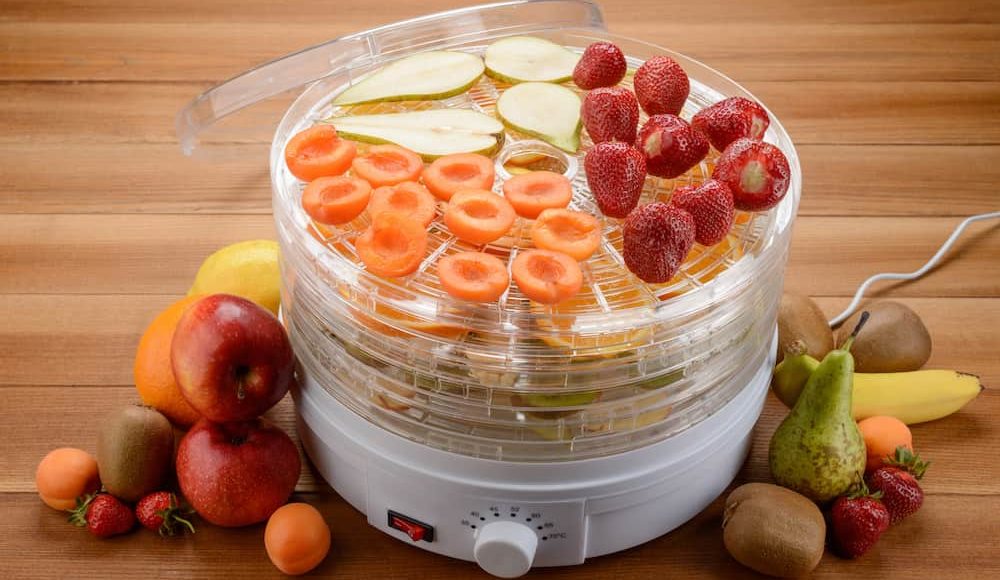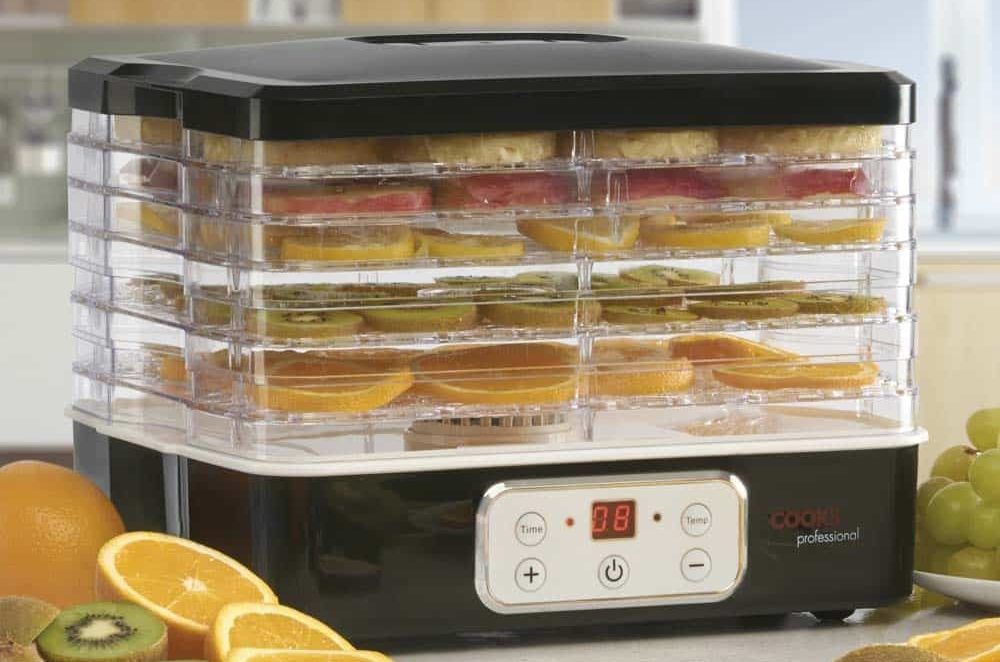Is it safe to leave a dehydrator unattended? The good news and answer to that question is that electrical food dehydrators can be left unattended overnight. Just make sure they are in a well-ventilated place, free of damage, and not covered by tea towels.
Because dehydrating foods in a dehydrator can take up to 24 hours, you might be wondering what to do with it overnight, at work, at university, or even while running errands.
While there are certain risks to keeping any electrical appliance on overnight, they are minor if you check your item’s safety recalls. Ensure your appliance is in good working order and that your smoke alarm is functioning properly.
Place your dehydrator on a flat surface away from anything that could catch fire due to heat, such as towels or water.
While electric food dehydrators are no more dangerous than other household equipment, it is always vital to handle them properly.
This includes placing them in a fixed location and keeping them away from flammable materials like towels and water. In addition, make sure the appliance is free of any safety recalls on a regular basis.
When To Walk Away From A Dehydrator: Is it Safe To Leave A Dehydrator Unattended?

Dehydrators are really handy kitchen gadgets, but do you need to supervise and stay in the kitchen with them? That does not seem very practical, given that it could take a day or more.
It would be best if you did not have to stand close to a machine for more than a dozen hours. Is there anything you need to keep an eye on all of the time? For years, I have been dehydrating meals for hiking and emergency storage, and I am delighted to share what I have learned.
There is nothing easier than this when it comes to preserving food. All you have to do is cut the food, place it on a tray, and turn on the dehydrator. Naturally, there are a few pointers to keep in mind.
Fortunately, you can largely set and forget. It is not a major deal, especially if your dehydrator has an automated shutdown, but why? I will go over how dehydrators operate and why they are safe to use
They do not need to be watched all the time. There is no need to stand over the procedure, just like when baking a cake, and you are free to go about your day or night. Dehydrators of high quality also include automated shutoff timers.
How To Leave Your Dehydrator Unattended But Safe
If you act with basic discretion, leaving dehydrators unattended is safe. It is quite normal and even important to be able to move away from dehydrating items because it can take hours or even longer at times.
Naturally, no one intends to spend the night in the kitchen as we all have something better to do.
If you follow a few basic, practical tips, the dehydrator will work great without you. To begin, carefully follow all of the instructions in your operation manual. People frequently overlook reading about their kitchen appliances. This is a blunder.
If the dehydrator has been switched on, use oven mitts to handle it. You do not want to injure your fingers by burning them.
Furthermore, for the most optimal results, you should preheat the dehydrator before putting anything inside.
Also, avoid leaving dehydrated food inside the dehydrator. Moisture from the surrounding air will enter, undermining the purpose of dehydration. Plus, you do not want mold spores or other minute impurities on your dehydrated food.
Also Read: How Long Does Couscous Last? – Does Couscous Go Bad?
What Are Safe Spaces To Keep Your Dehydrator At?

You must ensure that your dehydrator is kept in a secure location. Place your machine on a level surface at all times. Make sure the surface is not combustible as well.
Fortunately, most dehydrators do not become particularly hot, but your table or countertop could still be damaged. If you have wooden counters, place a marble cutting board beneath the machine.
We suggest getting Soulscrafts Marble Pastry Board off Amazon. It has a clean and sleek design made of marble and with dimensions of 4/5″ x 11 ⅘. It will keep your dehydrator cool from below, and it will also keep your wooden counters safe from any damages.
It is also simple to clean, as it is a smooth and non-porous surface that can be washed with warm soapy water.
Clear a space around your dehydrator at all times. Make sure it is not leaning against anything, such as a wall. Clean the area beneath the machine as well.
Also, make an effort to choose a location with plenty of airflow. A dehydrator should never be used inside a cupboard or other small enclosed space.
If you have pets or children who run around, keep the dehydrator out of reach. You do not want your machine to be knocked over while it is turned on. Most models do not include a tip-over switch since they are so stable.
It is as simple as that. You walk away after putting food inside and setting the timer. Dehydrating food would be impossible otherwise. I do urge you to check in on the procedure every three or four hours, though.
Recommended: Does Pickle Juice Go Bad? – Is Pickle Juice Good for a Long Time?
How Much Energy Does An Unattended Dehydrator Use?

Although you may technically dehydrate food in an oven, it is considerably more cost-effective to use a regular dehydrator.
Despite the fan and heating element, these ingenious and practical gadgets consume very little energy. Running your dehydrator for around ten hours will cost you between $0.29 and $1.20 on average.
It varies, of course. The cost of electricity per unit in your area may be higher or lower than the national average.
Likewise, the size of your dehydrator may necessitate a boost in wattage. In addition, increasing the heat uses a little more energy than the lowest level.
There is also the issue of heat to consider. An oven is large, and even if it is set to a low temperature of one-fifty to one-twenty degrees Fahrenheit, you will lose a lot of heat. As a result, your kitchen will be more comfortable.
Yes, that is a benefit during the winter months. In the summer, though, it may result in greater cooling costs.
Even using a vent fan will increase the price. Using smaller appliances like a dehydrator, griddle, or toaster instead of a full-size stove and oven is almost always more cost-effective.
We recommend getting COSORI Food Dehydrator which is cost-effective and quite affordable. It comes with a timer and temperature control. With the one-touch digital control panel, you can set temperatures from 95°F to 165°F and a timer for up to 48 hours.
Its overheat protection turns off the dehydrator automatically when it gets too hot, and it is also very easy to clean.
Is It Possible To Over Dehydrate Food?
In a nutshell, the answer is no; dehydrated foods cannot be over dehydrated.
The convoluted answer is that you cannot over dehydrate goods that will be stored. The food will store better and last for longer if it is drier.
You can over dehydrate fruit leather or jerky if that is your inclination, but you can not over dehydrate food that is designed to be stored.
However, you can dehydrate food to the point where it loses all texture. While the food will not spoil, it will taste awful and unpleasant to eat if dehydrated for an extended time.
Signs Of Over Dehydration
Signs of over dehydrated foods include
- Bad Taste: If the food tastes different than before, you are not enjoying its taste. It’s probably over dehydrated and lost its texture because of that reason.
- It Smells Different: If the food item you dehydrated smells different from before, and it does not feel like a pleasant smell, it is probably dehydrated more than necessary.
- Change In Texture: If the food has lost its texture or has changed in texture, it has definitely dried more than necessary.
- Shrank In Size: If the food in question has shrunk in size and looks smaller now, it has definitely dehydrated for more time than necessary.
The temperature of the dehydrator and how long you keep the food inside the appliance might cause dehydration. As a result, think about both options before dehydrating any goods.
You can rehydrate foods that have been overly dehydrated if you want to, although this is typically more difficult than dehydrating.
We recommend using it for a different purpose other than eating it directly if it is not possible to rehydrate.
Tips And Tricks To Use With Dehydrator
It is safe and secure to leave food in an unattended dehydrator. Getting the most out of your dehydrator, on the other hand, is a different matter.
You can prepare full backpacking meals, fruit leather, quick and easy rice or oatmeal, and much more.
Although operating these gadgets is rather basic and uncomplicated, you should be aware that there are a few rules to follow. Otherwise, you can get unexpected results, and your machine might quit working properly.
You can get something like COSORI Premium Dehydrator for premium and most efficient dehydration of food, it is a little costly, but it has all the premium and cool features one would need.
The fundamental principles of food dehydration are as follows:
- It is good to blanch the food before putting it in the dehydrator, although it is not required. The blanching technique kills the enzymes in the food, extending its shelf life. Blanching vegetables and fruits extend their shelf life significantly.
- If you want to rehydrate the food later, it will also taste fresher. Blanching is accomplished by boiling the components for a few minutes and then immersing them in cold water.
- Because of the difference in aroma, putting herbs and fruits in the dehydrator is not a good idea. The aroma of the herbs might be absorbed by the fruit, causing it to lose its flavor and leaving it unfit for cooking.
- Cut the food into identical portions before putting it in the dehydrator. Because all of the pieces will dry out simultaneously, cutting the components into consistent sizes will provide the greatest results. You will have to keep an eye on the progress if the parts are not all the same size.
Conclusion
Is it safe to leave a dehydrator unattended? Yes, you do not have to be concerned about leaving your dehydrator unattended.
You can toss the foods you want to save into the container and walk away. Dehydrators would not be very useful if you had to supervise the entire process.
I would recommend that you check on your dehydrator every few hours. You should also ensure that your machine is clean and in good functioning order. Fortunately, they do not require a lot of upkeep and maintenance.
